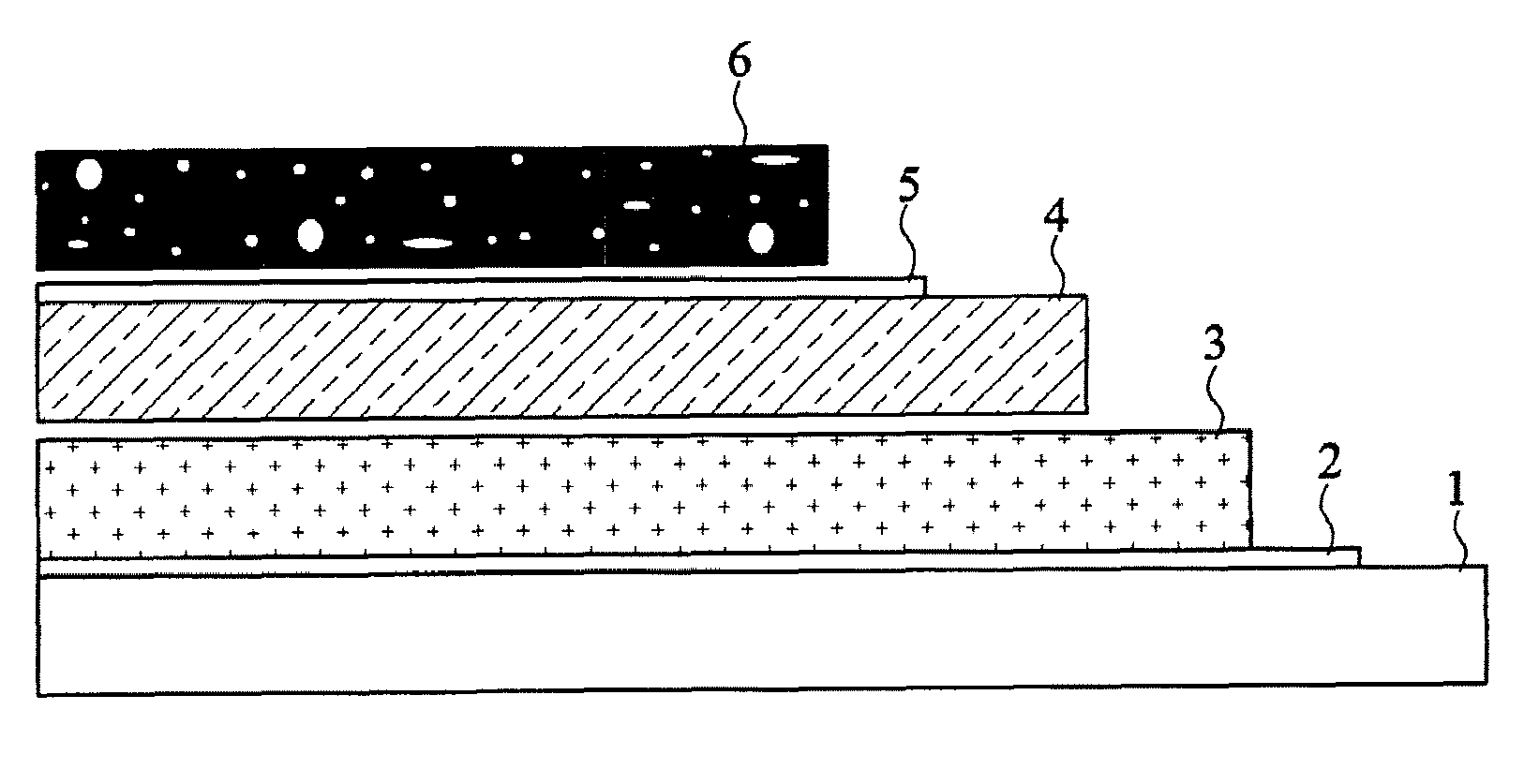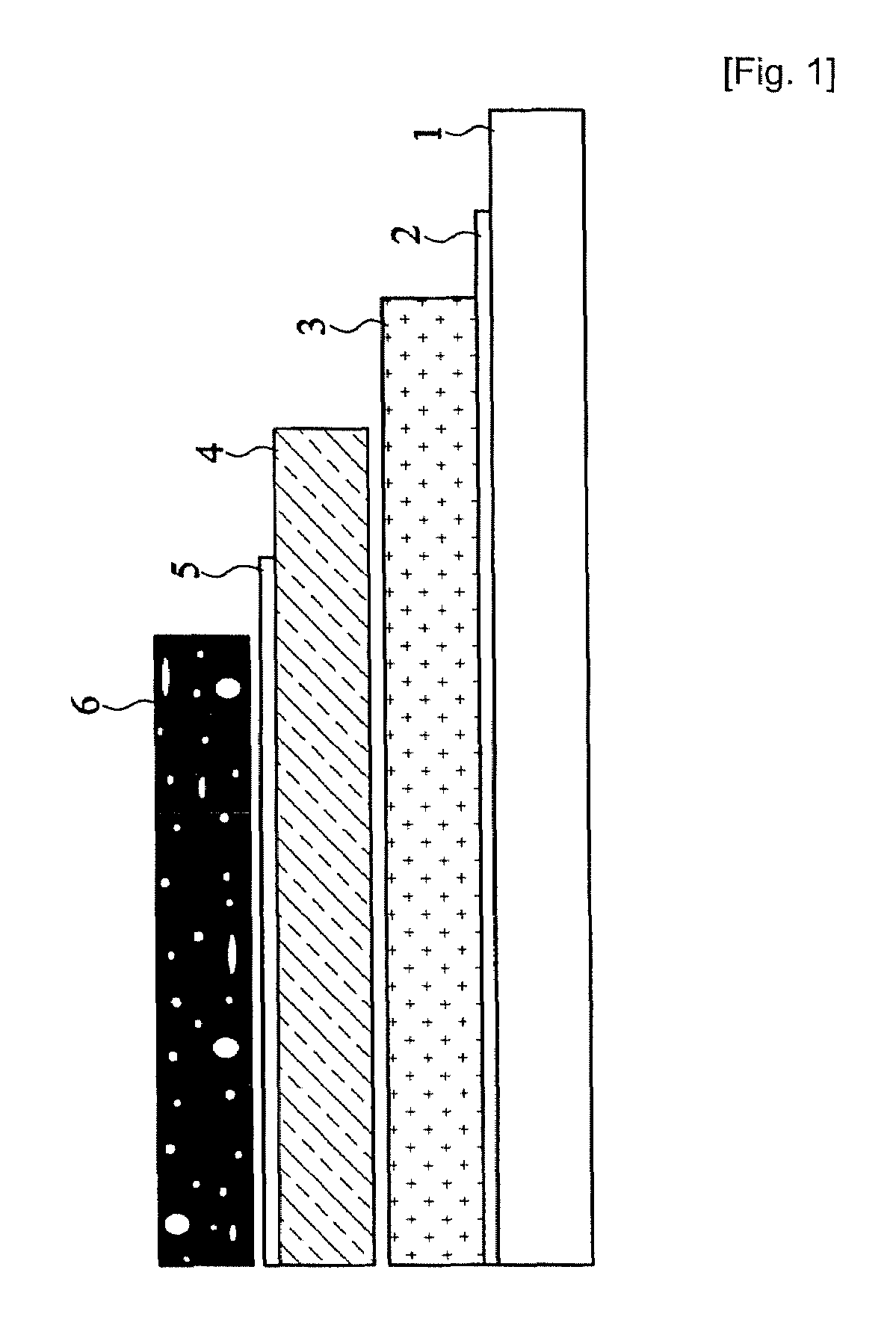Method of applying asphalt waterproofing membrane material for buildings and bridge decks
a technology for waterproofing membranes and bridges, applied in bridges, single-unit pavings, ways, etc., can solve the problems of reducing the strength and life span of bridge deck structures, requiring a large amount of rubber, etc., to achieve excellent physical properties of waterproofing membrane composition layers, excellent crack-bridging capability, and low temperature flexibility.
- Summary
- Abstract
- Description
- Claims
- Application Information
AI Technical Summary
Benefits of technology
Problems solved by technology
Method used
Image
Examples
preparation example 1
[0072]A pour point depressant (manufactured by Ultra Chemtech Korea Co., Ltd.; a condensation product of chlorinated paraffin and phenol; Cas No. N / A) and a viscosity index improver (manufactured by Ultra Chemtech Korea Co., Ltd.; an olefin copolymer; Cas No. N / A) were nixed with each other at a weight ratio of 1:1.25% of the mixture was mixed with 40 wt % of hydrotreated lube base oil-I (S-3300; manufactured by Ultra Chemtech Korea Co., Ltd.; Cas No. 64741-88-44) and 35 wt % of hydrotreated lube base oil-I (S-9500; manufactured by Ultra Chemtech Korea Co., Ltd.; Cas No. 64742-65-0), thus preparing paraffinic viscoelastic synthetic oil. The paraffinic viscoelastic synthetic oil had a pour point of −60° C., a viscosity index of 200 cp at 25° C., and a flash point of 265° C.
preparation example 2
[0073]10 wt % of the paraffinic viscoelastic synthetic oil obtained in Example 1 was added to 55 wt % of Superphalt (SK oil Co., Ltd., Korea) as asphalt having a penetration of about 70 dmm, and the mixture was stirred at about 150˜180° C. for about 30 minutes. To the stirred mixture, 10 wt % of a styrenic block copolymer, 10 wt % of waste tire rubber powder, 10 wt % of an inorganic filler and 5 wt % of a stabilizer and an antioxidant were added, and the resulting mixture was uniformly stirred at 180° C. and about 600 rpm for 3 hours, thus obtaining a heating-type asphalt waterproofing membrane composition.
example 1
[0074]Foreign matter was removed from a base 1, and then a base coating (primer) was applied on the base 1 in an amount of 0.2 liters per m2 and cured to obtain a smooth surface, thus depositing a base coating layer 2. On the base coating layer 2, the heating-type asphalt waterproofing membrane composition was uniformly applied to a thickness of 2 mm, and was indirectly heated to 200° C., thus obtaining a membrane layer 3.
[0075]Before the membrane layer 3 was completely cured, sawdust obtained by either grinding waste wood generated in building and construction fields to a size of 10˜20 mm2 or collecting sawdust generated in wood processing factories, sieving the collected sawdust through a 10-mm size sieve and recovering the sawdust portion remaining on the sieve was paved on the membrane layer 3 to a thickness of 2 mm in order to protect the waterproofing layer 3 and to integrate the layer 3 with a pavement layer, thereby obtaining a sawdust layer 4.
[0076]On the sawdust layer 4, a...
PUM
| Property | Measurement | Unit |
|---|---|---|
| temperature | aaaaa | aaaaa |
| thickness | aaaaa | aaaaa |
| thickness | aaaaa | aaaaa |
Abstract
Description
Claims
Application Information
 Login to View More
Login to View More - R&D
- Intellectual Property
- Life Sciences
- Materials
- Tech Scout
- Unparalleled Data Quality
- Higher Quality Content
- 60% Fewer Hallucinations
Browse by: Latest US Patents, China's latest patents, Technical Efficacy Thesaurus, Application Domain, Technology Topic, Popular Technical Reports.
© 2025 PatSnap. All rights reserved.Legal|Privacy policy|Modern Slavery Act Transparency Statement|Sitemap|About US| Contact US: help@patsnap.com


